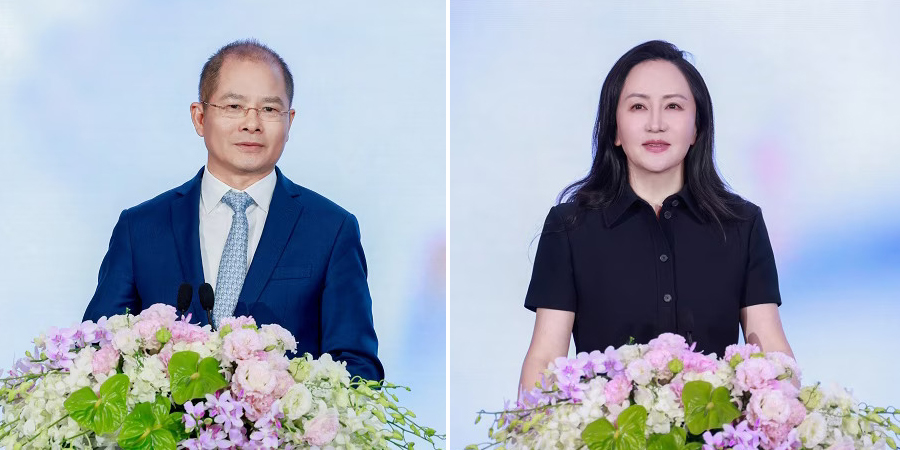Huawei reported 35.6 billion yuan ($5.12 billion) in net profits in 2022, a drop of 68.7% as compared to 2021 (113.7 billion yuan) in its annual report. The company generated 642.3 billion yuan ($92.37 billion) in revenue. During a press conference, Huawei said that it would continue to strengthen investment in R&D, with an annual expenditure of 161.5 billion yuan ($23.22 billion) in 2022, representing 25.1% of the company's annual revenue and bringing its total R&D expenditure over the past 10 years to more than 977.3 billion yuan ($140.55 billion).
Huawei’s outgoing rotating chairman, Eric Xu, said, "In 2022, a challenging external environment and non-market factors continued to take a toll on Huawei's operations. In the midst of this storm, we kept racing ahead, doing everything in our power to maintain business continuity and serve our customers."
Meanwhile, Sabrina Meng, Huawei's newly appointed rotating chairman and former CFO, noted, "Despite substantial pressure in 2022, our overall business results were in line with forecast. At the end of 2022, our liability ratio was 58.9% and our net cash balance was 176.3 billion yuan ($25.35 billion). In addition, our balance of total assets reached one trillion yuan ($0.14 trillion), largely composed of current assets such as cash, short-term investments, and operating assets. Our financial position remains solid, with strong resilience and flexibility. In 2022, our total R&D spend was CNY 161.5 billion ($23.22 billion), representing 25.1% of our total revenue — among the highest in Huawei's history. In times of pressure, we press on — with confidence."
Also read: Huawei scores “a substantial victory” in Meng Wanzhou case
In 2022, revenue from Huawei's carrier, enterprise and consumer businesses was $40.84 billion, $19.15 billion and $30.84 billion, respectively.
Huawei said that it is a “strong proponent of growing together with its ecosystem partners and believes that openness and collaboration lead to shared success.” The company has continued to open up its platform capabilities across its HarmonyOS, Kunpeng, Ascend, and cloud portfolios, focusing on improving the developer experience as well as enabling and supporting its ecosystem partners on all fronts.
"In accordance with Huawei's rotating chair system, Ms. Meng will assume the position of rotating and acting chair of Huawei from April 1, 2023, to September 30, 2023," Huawei said in a statement.
A leading supplier of telecom gear, smartphones and other advanced equipment, Huawei has taken a hit in recent years from a US-led pressure campaign that has taken a major chunk out of the company’s businesses.
In the Middle East, Africa (EMEA) and Europe, demand for data traffic continued to grow in emerging markets while in mature markets, ICT infrastructure (e.g. 5G and optical networks) rollout accelerated and customers increased investment. As a result of these factors, Huawei carrier business grew steadily; and enterprise business also grew rapidly as industries began moving faster towards digital, intelligent, and low-carbon development. Huawei’s revenue from these regions reached USD 21,458 million in 2022, which achieved 13% growth compared to 2021.
In the ICT infrastructure business, Huawei focuses on information distribution, interaction, transmission, processing, and storage to develop innovative products and solutions.
Over the past year, Huawei has placed customers at the heart of everything it does and worked with global carriers and partners to build simplified, green, and intelligent ICT infrastructure, all the while accelerating digital transformation and facilitating business success in the 5G era. By the end of 2022, 5G had entered a stage of rapid development, with over 1 billion 5G users worldwide. 5G user penetration had exceeded 30% for leading carriers in a number of countries, including China, South Korea, Switzerland, Finland, and Kuwait, and over 30% of mobile traffic came from 5G networks. In addition, more than 40% of the world’s 5G carriers were providing innovative 5G applications.
In 2022, Huawei worked with leading carriers and industry partners in the Middle East, Europe and Asia Pacific to carry out joint innovation on 5.5G, F5.5G, and Net5.5G, together exploring business scenarios and verifying key technologies. Huawei joins with carriers and industry partners in working towards the 5.5G era and creating new value together.
As the 5.5G era unfolds, the network capabilities and business value it offers are becoming increasingly clear. 5.5G will improve network capabilities by 10 times and help carriers seize even more business opportunities.
In addition to ubiquitous connectivity and the ultimate experience for all of society, improving the energy efficiency of ICT infrastructure is also the common target of carries. This will drive energy conservation and emission reduction, and enable green and sustainable development across all industries through ICT technologies. To support this, Huawei work jointly with carries on green site, green network and green operations. In the Middle East, Huawei helped carriers implement the 5G user migration policy, which reduced the energy consumption of a single site with a high proportion of 5G traffic by about 30%.










